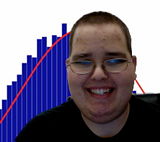| (33 intermediate revisions by 2 users not shown) | |||
| Line 1: | Line 1: | ||
| − | + | ==Jamie Weigandt== | |
| − | + | [[Image:jamie.jpg|160px]] | |
| − | + | Jamie Weigandt is an alumnus of the Purdue mathematics department (2008) and starting his third year of graduate studies in the same department. He's beginning his second year in the National Science Foundation's Graduate Research Fellowship Program studying Algebra and Number Theory with Prof. Edray Goins. He's particularly interested computational and statistical questions concerning the arithmetic of elliptic curves. | |
| − | = | + | = Note on this page = |
| − | + | For the time being I will use LaTeX code freely when editing this page. When the jsmath plugin is installed it should TeX on the fly in your browser. | |
| − | + | ||
| − | = | + | = Projects = |
| − | + | I'm hoping to use this space to describe some of my current projects. These include | |
| − | + | * A database of Elliptic Curves with Prescribed Torsion | |
| + | * Connections between the Mordell-Weil ranks and Szpiro Ratios of elliptic curves | ||
| + | * Finding elliptic curves of conductor less than $10^6$ which do not appear in the Stein-Watkins database. | ||
| + | * Transfers that Track Down Atypical ABC Triples. (I was feeling whimsical... deal with it!) | ||
| + | * Work with Matt Davis and James Ryan concerning the Erdös-Woods problem. | ||
| − | + | There are also a number of current developments in the field that I will be trying to learn about. These include | |
| − | + | ||
| − | + | ||
| − | + | * The work of Mazur and Rubin reducing Hilbert's Tenth Problem for the rings of integers of number fields to the Shafarevich-Tate conjecture. | |
| + | * The work of Bhargava the average size of Selmer groups of elliptic curves. | ||
| + | * Heath-Brown's result on the distribution of Selmer ranks of elliptic curves, and the subsequent generalization to "generic" curves with full two-torsion by Swinnerton-Dyer. | ||
| + | * The two recent proofs of the ABC conjecture for the ring of entire functions. I will need to learn some Nevanlinna theory to understand this business. | ||
| − | = | + | = Essay Contest Entry = |
| − | + | If you're looking for my essay contest entry for "Why do I 'math'?", it can be found [[Why_do_I_math_-_Weigandt | here ]]. | |
| − | + | ||
| − | + | ||
| − | + | ||
| − | + | ||
| − | + | ||
| − | + | ||
| − | + | ||
| − | + | ||
| − | + | ||
| − | + | ||
| − | + | ||
| − | + | ||
| − | + | ||
| − | + | ||
| − | + | ||
| − | + | ||
| − | + | ||
| − | + | ||
| − | + | ||
| − | + | ||
| − | + | ||
| − | + | ||
| − | + | ||
| − | + | ||
| − | + | ||
| − | + | ||
| − | + | ||
| − | + | ||
| − | + | ||
| − | + | ||
Latest revision as of 05:18, 13 August 2010
Jamie Weigandt
Jamie Weigandt is an alumnus of the Purdue mathematics department (2008) and starting his third year of graduate studies in the same department. He's beginning his second year in the National Science Foundation's Graduate Research Fellowship Program studying Algebra and Number Theory with Prof. Edray Goins. He's particularly interested computational and statistical questions concerning the arithmetic of elliptic curves.
Note on this page
For the time being I will use LaTeX code freely when editing this page. When the jsmath plugin is installed it should TeX on the fly in your browser.
Projects
I'm hoping to use this space to describe some of my current projects. These include
- A database of Elliptic Curves with Prescribed Torsion
- Connections between the Mordell-Weil ranks and Szpiro Ratios of elliptic curves
- Finding elliptic curves of conductor less than $10^6$ which do not appear in the Stein-Watkins database.
- Transfers that Track Down Atypical ABC Triples. (I was feeling whimsical... deal with it!)
- Work with Matt Davis and James Ryan concerning the Erdös-Woods problem.
There are also a number of current developments in the field that I will be trying to learn about. These include
- The work of Mazur and Rubin reducing Hilbert's Tenth Problem for the rings of integers of number fields to the Shafarevich-Tate conjecture.
- The work of Bhargava the average size of Selmer groups of elliptic curves.
- Heath-Brown's result on the distribution of Selmer ranks of elliptic curves, and the subsequent generalization to "generic" curves with full two-torsion by Swinnerton-Dyer.
- The two recent proofs of the ABC conjecture for the ring of entire functions. I will need to learn some Nevanlinna theory to understand this business.
Essay Contest Entry
If you're looking for my essay contest entry for "Why do I 'math'?", it can be found here .


